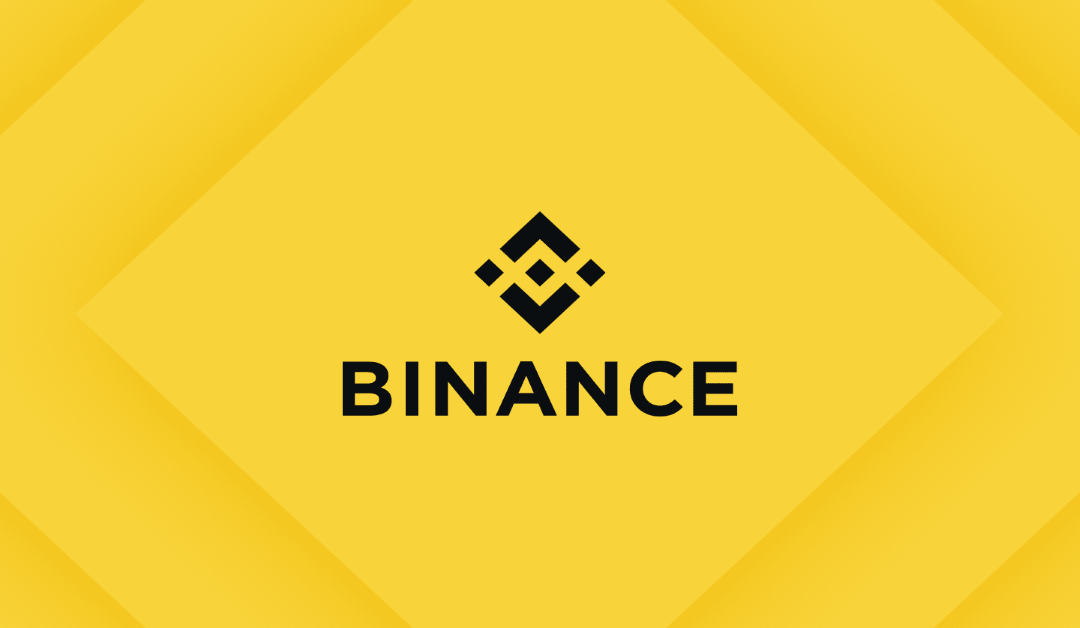
by Chelsea Florence | Nov 10, 2023 | Blockchain
Key Points
- MoonDAO is offering its second ticket to take another DAO-voted member into Space via Jeff Bezos’s company, Blue Origin.
- MoonDAO sent the first DAO-voted member into Space in August 2022 and is now back with similar pursuits.
In August 2022, MoonDAO completed an exciting endeavor, sending a DAO-voted member to Space. The DAO is now back for a second leg, where a lucky contestant will be selected for a similar experience.
MoonDAO seeks astronauts to Space via Blue Origin.
The Decentralized Autonomous Organization has announced another sweepstakes round to get a lucky member to join the next flight to Space with Jeff Bezos’s Blue Origin space company.
According to their Nov. 7 announcement, owning a ticket to Space NFT is not mandatory to enter their sweepstake or win. However, the registration process depends on the DAO’s terms and conditions.
The announcement explained that the selection process is community-oriented and revamped to improve the onboarding experience while leveraging the MoonDAO App and Marketplace.
This material is meant for educational and recreational purposes only. It is not financial advice in any way; therefore, damage caused by the information provided here is not liable to the company or the writer in question. Please make due diligence and conduct your own research before taking any action prompted by the information provided above.
For more resources like this one, keep watching our website and remember to follow our socials to stay ahead of the curve. Thanks for believing in us. Your support is appreciated.
X.com Linkedln Truth Social Reddit
Do you like our content and would love to support us more? You can use these addresses.
Ethereum: 0xe6814Bf3B50691BC1697E4B2717f5d204b67C7f6
Bitcoin: bc1qpeuuw7szfdkqd7hp66uhkas4huha8qkwxdgxtg
BNB Chain/BEP 20: 0xe6814Bf3B50691BC1697E4B2717f5d204b67C7f6

by Melissa Adams | Nov 10, 2023 | Blockchain
Key Points
- Bitcoin has broken an 18-month high by trading at over $37,500 on Nov 9.
- ETH has also been surging in prices, but so is its gas fees. Over the past 24 hours, it breached the $200 mark for given high-priority transactions, igniting debate on scalability issues.
Bitcoin and Ethereum are surging in price as the BTC halving countdown closes in. However, concerns are now rising over scalability issues as gas fees surge. Bitcoin network recently began being used for inscriptions and hosting other tokens; as a result, its scalability is now in question whether it will be able to handle the demands as a bull market may be close.
Are bull market issues beginning once more?
Crypto market cycles have been seen to follow four years of Bitcoin halving. This time, it’s not any different. The crypto market is recovering fast from the heavy bear market that began towards the end of 2021 as Bitcoin’s halving countdown continues clocking. It’s now only 190 days left till the halving is done, and Bitcoin has already registered a new 18-month high.
However, concerns are rising over its scalability issues. Bitcoin network has been upgraded to support ordinal inscriptions, and new token standards have been introduced, allowing it to have ecosystems built around it. As a result, the network will be required to settle even more transactions than ever before.
In past bull cycles, the Bitcoin network has been subject to high gas fees, though not as high as Ethereum. Ethereum has undergone new improvements in its scalability issues via the transition to the POS mechanism. However, this transition was confirmed not to have very significant changes to the network’s gas fee challenges just yet.
Over the last 24 hours, crypto users started circulating screenshots of $220 gas fees required to settle a high-priority transaction on the Ethereum network, while others showed one with a $100 mark. On the Bitcoin matter, at the same time frame, the average Bitcoin gas fees hovered around $10 while it had been around the $1 mark for the past three months.
This material is meant for educational and recreational purposes only. It is not financial advice in any way; therefore, damage caused by the information provided here is not liable to the company or the writer in question. Please make due diligence and conduct your own research before taking any action prompted by the information provided above.
For more resources like this one, keep watching our website and remember to follow our socials to stay ahead of the curve. Thanks for believing in us. Your support is appreciated.
X.com Linkedln Truth Social Reddit
Do you like our content and would love to support us more? You can use these addresses.
Ethereum: 0xe6814Bf3B50691BC1697E4B2717f5d204b67C7f6
Bitcoin: bc1qpeuuw7szfdkqd7hp66uhkas4huha8qkwxdgxtg
BNB Chain/BEP 20: 0xe6814Bf3B50691BC1697E4B2717f5d204b67C7f6

by Fintech Express | Nov 8, 2023 | Blockchain
Key Points
- Binance crypto exchange has launched a Binance Web3 wallet for its 150 M registered users.
- The Binance Web3 Wallet has been launched within the primary Binance app and is predominantly used for trading cryptocurrencies.
Binance has announced the launch of the Binance Web3 Wallet, which will be used for crypto trading and be harbored in the main Binance trading App.
Binance excites its users with a new Web3 solution
The new wallet was introduced at the Binance Blockchain Week conference in Istanbul and is set to be made available to all users via the official international platform for the exchange. During the launch, CEO Changpeng Zhao explained that the exchange is tapping into the innovation as Web3 wallets represent more than just the storage of digital assets as they empire sovereignty of personal finances.
“Web3 wallets represent more than just storing digital assets — they are an integral part of the Web3 framework, empowering individuals with the ability for self-sovereign finance.”
According to the released notes on the innovation, the application utilizes a multi-party computation mechanism (MPC), which is used to break the user’s private keys into three smaller parts called Key shares. Two of the keys are controlled by the user at all times, allowing for self-custody.
The three shares of the keys will be held at three different places, with the first one being held with Binance, the second part stored locally on the user’s mobile phone and the third being encrypted by the user’s recovery password and backed up to their personal cloud storages like iCloud or Google Drive.
The announcement explains that having the keys split across three different locations reduces the chances of vulnerability and mitigates the possibility of the keys falling into the hands of third parties.
According to the head of regional markets at Binance, Richard Teng, the MPC technology removes fears of losing the seed phrase.
“We want our users to be assured that they interact with Web3 within a secure and protected ecosystem. That is why we have incorporated MPC technology and Binance’s trusted security infrastructure within the Web3 Wallet,” Teng said.
This material is meant for educational and recreational purposes only. It is not financial advice in any way; therefore, damage caused by the information provided here is not liable to the company or the writer in question. Please make due diligence and conduct your own research before taking any action prompted by the information provided above.
For more resources like this one, keep watching our website and remember to follow our socials to stay ahead of the curve. Thanks for believing in us. Your support is appreciated.
X.com Linkedln Truth Social Reddit

by Chelsea Florence | Aug 18, 2023 | Blockchain
Key Points
- Ethereum and Cardano co-founder Charles Hoskinson has taken a shot against at Ethereum, calling it a “dumpster fire” due to its development approach.
- He added that he pities Ethereum maxis, and Cardano’s comparison with Ethereum is now going too far.
Charles Hoskinson has expressed his uncertainty with the Ethereum roadmap amid comparisons to his Cardano ecosystem. He has taken a shot against Ethereum, saying its consensus layer is a “dumpster fire.”
Charles Hoskinson says he pities Ethereum maxis
Charles Hoskinson was one of the co-founders of Ethereum. However, he defected from the development team and went on to build Cardano and its native coin ADA.
Cardano has similar perks to the Ethereum network, attracting investors’ interest, making it one of the largest coins by market capitalization. It is also seen as an alternative to Ethereum by some.
Charles Hoskinson is fond of campaigning for the Cardano ecosystem as it keeps growing and has one of the highest daily developer activities in the industry. Recently, an interesting fan take on his Cardano project being similar to Ethereum and doubts about its roadmap has caught his attention.
He responded to the fan saying the comparison between the two is getting delusional now and that Cardano users now are “living rent-free in the maxi minds.” he also added that he pities the maxis as Ethereum has a “dumpster fire of a consensus layer.”
“Ethereum has a dumpster fire of a consensus layer, has a terrible programming model that they can’t change, and are getting eaten alive by their layer two ecosystems.”
Additionally, he said that Cardano’s sidechain plans would mutually benefit both the Cardano blockchain and the sidechain, unlike Ethereum.
The Cardano Foundation first published a research paper on the Hydra network in March 2020. The network is meant to be a layer two solution that uses sidechains to offload transactions from the main Cardano network making it more scalable ad faster.
The research explained that Hydra could process about 1000 transactions per second and have 1000 stacking pools, each of which could process 1000 TPS giving Cardano a throughput of 1 million transactions per second.
The first mainnet compatible Hydra node was released on May 11 2023, teasing an upcoming Hydra Pay, a layer two integration with Cardano wallets that bears instant settlement and a “gazillion TPS.”
However, there still needs to be a certain product launch date, with Cardano remaining with a low average of daily transactions. It serves an average of 65K compared to Ethereum’s 1 million transactions. Keep watching Fintech Express for more updates on crypto and other fintech-related developments.

by Melissa Adams | Aug 17, 2023 | Blockchain
Key Points
- Shiba Inus marketing strategist Lucie has issued a stern warning and offered instructions to reduce the risk of phishing attacks when using Shibarium.
- Shibarium went live on August 16 as an Ethereum layer two scaling solution and can be accessed by anyone for development, just like other EVM blockchains.
Shiba Inu’s marketing strategist Lucie has cautioned the public against possible phishing attacks on the new Shibarium blockchain, giving instructions to keep safe.
Shibarium blockchain goes live
Shibarium blockchain has long been a long-awaited blockchain for the Shiba Inu ecosystem. As such, it is expected that attacks could be carried out on the blockchain against its users.
The meme coin’s marketing strategist Lucie has cautioned users against possible phishing attacks, asking them to remain vigilant and exercise caution when interacting with projects on the network. Like BNB Chain and Ethereum blockchains, Shibarium allows for the development and deployment of any project that could be used as an avenue for swindling money to un-detecting users.
In a Twitter post, Lucies stated that though the network’s openness is great, it also opens routes for bad actors, who could even use the Shiba and Shibarium names in their scammy projects.
“Similar to Polygon, Ethereum, and other blockchains, Shibarium is open for anyone to build on. Regrettably, this also allows bad actors to develop scam dApps and rug-pull tokens, among other things. The mere incorporation of the term “Shibarium” or “Shib” in their names holds no credibility.”
Lucie explained to users that they ought to prioritize development over all else.
“Prioritize research: delve into their Telegram and Discord channels, gauge the community’s atmosphere, scrutinize their social media posts, and check Etherscan. Prioritizing your safety is paramount.”
Keep watching Fintech Express for more crypto and fintech-related developments.

by Samuel Mbaki | Aug 15, 2023 | Blockchain
Key Points
- Decentralized asset management platform Valio launches, promising users control of their assets and immersion into Web 3
- The platform targets “leveling the playing field” for investors.
Valio, a new decentralized asset management system, has launched publicly, aiming to allow users to have their funds managed by professional traders without trusting them as custodians.
Leveling the playing field?
As Web 3 keeps evolving, new solutions are coming up now and then. Some of these solutions aim to increase users’ productivity in the Web 3 sector. In that line, Valiio, a new decentralized asset management system, has come up to allow users to have their funds managed by traders trustlessly.
The application allows investors to browse a list of managers and view their trade stats via an explore page. If the investor back a particular money manager, they can deposit their assets to participate in that manager’s fund. These funds are then held in smart contracts, ensuring the manager cannot withdraw them.
In conversations with Fintech Express, the platform’s founder, Karlis, told us that the platform simply aims to increase smart access to crypto and ensure investors do not have to guess through what tokens to invest in.
“Valio provides simple access to smart crypto exposure. With Valio, you no longer have to guess what tokens to buy, but instead, you can back proven Web3 traders and asset managers trustless.”
During the launch, Valio is integrated with Optimism and Arbitrum. Still, Karlis told us that they expect to launch it on networks like Ethereum Mainnet and Base soon, as well as any other network their community wants.
Right now, Valio is live on Optimism and Arbitrum. We plan to launch on Ethereum mainnet and Base and any other LayerZero-supported networks the community wants.
According to Karlis, the platform also uses a “cumulative price impact tolerance architecture” that limits the amount of price impact money managers can cause to an individual investment. This functionality is added to prevent managers from drinking user money into illiquid assets.
He added that this ensures that even if a corrupt manager decides to make away with the money, he can only take 3 to 5%, which is much lower than what could have been earned honestly.
“The Cumulative Price Impact Tolerance (CPIT) is a custom-built security architecture that allows Valio to facilitate a trustless and non-custodial asset management relationship between traders and depositors. The CPIT solves the billion-dollar fraud problem in our industry by eliminating the need for trust between managers and depositors while protecting depositors from rugs. Existing asset management platforms also limit trader scope as they scale TVL, whereas our CPIT does not do that.” He said.
In summary, Karlis said they were glad about the success they saw at the project launch and believe they have unlocked a new asset class for the industry that will reshape the industry. He added that though it is in its initial phases, they aim to keep building Valio up into the future.
“We have been thrilled with the usage we have seen so far. We’ve seen over 100 new vaults created since launch, and users seem to enjoy the product. Although it’s still in the early stages with limited functionality, we’re excited about the future as we continue to grow Valio. We believe that we have unlocked a new asset class for the industry.”
Keep watching Fintech Express for more updates on Web 3 and other fintech-related developments.






